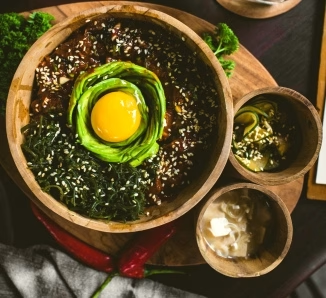With the recent rise of the gluten-free diet, gluten-free pastries have also become popular. Gluten is a protein found in grains like barley, wheat, and rye. For those with gluten allergies, consuming it can cause gastrointestinal discomfort.
Thus, a gluten-free diet allows those with gluten allergies to enjoy delicious food without worry. So, besides wheat, what other ingredients can be used to make gluten-free pastries? Let’s take a look at seven common gluten-free pastry ingredients.
What are gluten-free grains?
Gluten-free grains refer to any grain or root vegetable, with the exception of wheat, barley, rye, and spet. I buy most of my regular flours in their original form and grind them into a fine powder using a stone grinder. Some oil-rich nuts and seeds are blended in a high-speed blender.
Brown Rice
Its amylose content is between that of glutinous rice and glutinous rice, making it neither too hard nor too soft. When used in cakes, it creates a perfectly fluffy and moist finish.
Raw Brown Rice Flour
Raw brown rice flour is ground using a stone mill. You can buy ready-made water-ground brown rice flour. Commercially available powder is finer and absorbs oil and water better, resulting in a firmer baked cake. Even with the same rice type, different grinding methods can alter the flavor and texture. There’s no good or bad. As long as you’re familiar with the flours you have, you can create your own unique pastry.
Brown Rice Bran
Brown rice bran is a cooked flour. It’s made by steaming the rice, letting it cool, then stir-frying it, and finally grinding it into a powder. Adding it to ingredients adds a toasted aroma to pastries. Therefore, it’s not suitable for all pastries. However, brown rice bran dissolves easily in hot water and absorbs well with oils, so I like using it in savory pie crusts. It creates a more fragrant and crispy texture than raw brown rice flour.
Oats
Oats are high in dietary fiber, giving them a chewier texture than brown rice. While naturally gluten-free, oats are often grown in rotation with wheat in the same fields or processed in the same factories and equipment, leading to cross-contamination and the potential for gluten in oats.
Oat Flour
Most commercially available oats are already flattened oat flakes. Simply blend them in a high-speed blender to create oat flour suitable for baking. Adding water creates a smooth texture.
Buckwheat
Buckwheat has a low glycoprotein content, so noodles made with buckwheat flour are less sticky than those made with wheat flour. However, compared to home-ground brown rice flour, buckwheat paste has a looser texture when added with water.
Raw Buckwheat Flour
Buckwheat itself has a light nutty aroma. Buckwheat flour, which can be used directly in beverages, is roasted and then ground into a powder, resulting in a rich, calming aroma. However, if used in desserts, the aroma of cooked buckwheat flour can easily overshadow the dessert.
Therefore, I recommend buying raw buckwheat. You can choose to germinate it for nutritional benefits or grind it into a fine powder for use in desserts.
Quinoa
Quinoa is high in dietary fiber and protein, low in starch, and produces a less sticky cake.
Quinoa Flour
You can grind it in a stone mill or blend it in a high-speed blender.
Corn
Corn has a unique flavor not found in other grains, giving desserts a unique texture and mouthfeel.
Yellow Corn Flour
The corn flour used here is not corn starch, which is used to thicken thickening sauces. Instead, it is made from hard corn kernels, with the germ and husk fragments still retained. This results in a higher fiber content, a richer flavor, and a more substantial texture than other grains.
Besides buying ready-made corn, you can also buy fresh corn, cut the kernels, dry them at low temperature, and blend them in a high-speed blender. To avoid overheating the grains while blending, it’s recommended to blend them in small batches until they are a fine powder.
Chickpeas (Chickpeas/Yaconite Seeds)
Because they contain a lot of saponins, the water used to boil chickpeas creates a soap-like lather when blended at high speed. This lather can be used to whip up meringues. Raw chickpeas also have a bitter and pungent taste due to saponins. Trying a dough with chickpea flour might make you feel nauseous, so avoid it.
Chickpea Flour
Chickpeas are very hard, and blending them in a high-speed blender can scratch plastic cups. It’s best to use a stone grinder and grind them in batches, from coarse grains to a fine powder.
Chickpeas are a common ingredient in Middle Eastern cuisine, perhaps just like white rice. Chickpea flour is often used as a frying pancake or flatbread.
Kuzu
Kuzu can cool down and reduce internal heat, improve digestion, and is rich in various amino acids. It’s a nutritious natural thickener and a healthy alternative to other starches. Kuzu powder is made by washing, drying, and water-grinding the roots of the leguminous plant, Kuzu. This method is simple to prepare and retains its nutrients.
Kuzu Powder
When combined with grain flour, kuzu powder creates fluffy cakes and crispy pie crusts. Choose pure kuzu powder without the addition of other thickening starches.


Leave a Reply